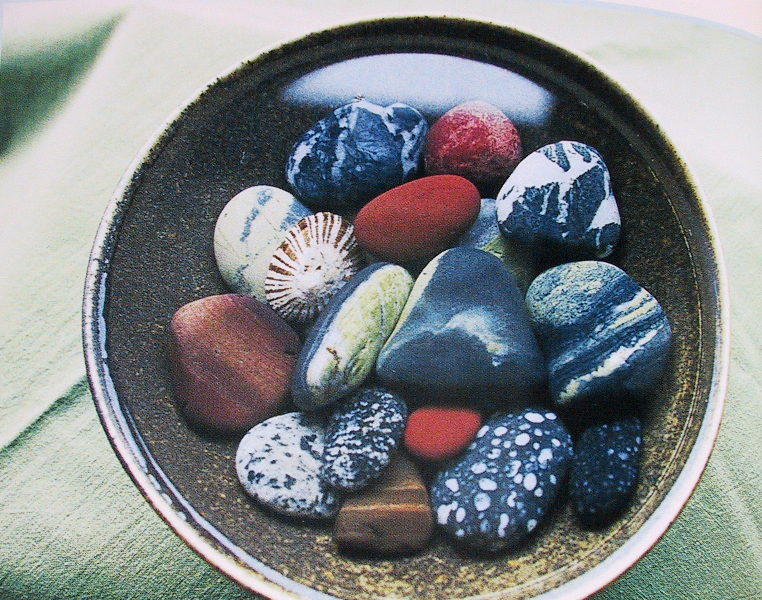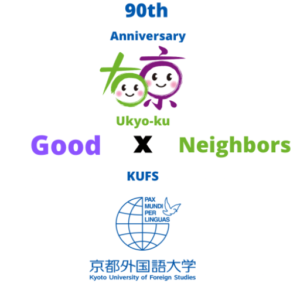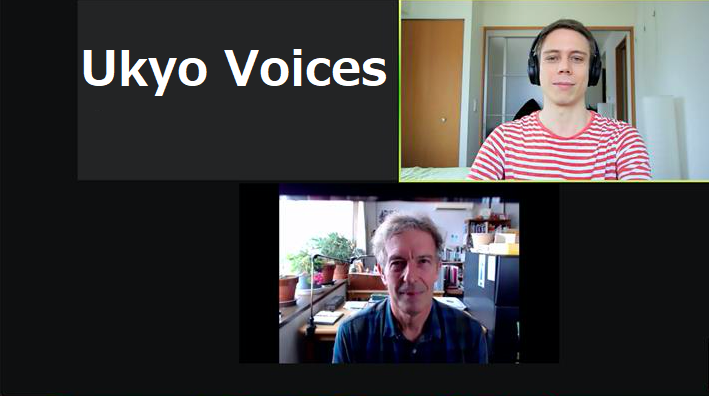[Living Histories] Mr. Stephen Gill
Interviewers/Authors: Niklaus Weigelt, Ryota Harada
Stephen Gill was born in North Yorkshire, England in 1953 and graduated from London University in 1979 with a degree in Japanese language and literature. He has been living in North-West Kyoto for 26 years, and at present, teaches courses in English language and haiku in English literature at Kyoto University, as well as comparative culture and haiku in English literature at Ryukoku University. Furthermore, Stephen is a leading light in the Hailstone Haiku Circle, Kansai’s only English language haiku society, which has an international membership and meets on a regular basis. He also has a very strong publishing record, including poems, articles, books, and translations, and has had twenty of his scripts broadcast by BBC Radio. Stephen remains active in the arts, giving talks about haiku, as well as holding ike’ishi (生け石), ‘live-stone’ arrangement art installations, of which he has held over twenty to date. Additionally, he is very passionate about environmental protection and helps run the nature conservation volunteer NPO, People Together for Mt. Ogura, which seeks to restore to beauty the place famed for waka near Arashiyama.
― Can you tell me what first brought you to Kyoto, and why you chose to live in Saga?
Mr. Gill: I got married to a Japanese, and we were living and working in London for about ten years. Eventually, she wanted to return to Japan. I found a teaching job in Osaka and because I had lived here before for one year, I knew that Ukyo-ku was a nice and quiet area. Additionally, I could connect with my university campus in Osaka. Then, in 1995, we started looking for a place to live from which we would make a new life here in Japan.
― When did you first become interested in Haiku, and how did you become involved with the Hailstone Haiku Circle?
Mr. Gill: It started when I was around 18 years old and studying at Oxford University. I had already travelled out across land to India during the ‘hippy days’ when many young people decided to drop out of education. I was very unsettled and went up to a Tibetan monastery in Scotland. I went there because I was interested in Tibetan culture. In the monastery’s library there was an assortment of oriental books. One of them was the Penguin Classics translation of Matsuo Basho, the great haiku poet who travelled to the north of Japan. That resonated with me because I had been travelling a little and I had also been writing a little. When I found Basho in 1972 it completely changed the way I looked at the world. I focused on nature as a place to find solace and a sort of stability as I travelled and moved through life, still restless, young, and learning. I eventually went back to university where I studied Japanese language and literature. That knowledge allowed me to read the original Basho in Japanese.
― Do you think the Haiku of today are very different compared to early works? If so, how?
Mr. Gill: Haiku wasn’t a term until Masaoka Shiki started to use it in the Meiji period. The old term, for example, used by Basho in the Edo period was ‘hokku’. Hokku means ‘the starting verse’. A hokku began a sequence written by a whole group of poets, participating in linked verse. It all changes with Shiki, where a haiku, this new term, can stand out and be put on its own. After Shiki, we come to contemporary Japanese and the growth of haiku in North America particularly, and in Britain to a lesser extent. I fit in somewhere towards the end of that curve.
The basic idea of haiku is the same. It should be brief, it should be about nature, and if possible, have a reference to a season. However, immediately after Shiki’s death there evolved a breakaway group which proposed that haiku could be free without seasonal references and not adhering to the 5-7-5 structure. The group of poets around me in Kansai still emphasize seasonality due to Kyoto being a centre of seasonal festivals and traditional attitudes. Nevertheless, our contemporary haiku are a bit different from Basho’s. The basic inspiration remains the same but how we are living today and what we are writing about has changed. There should always be some sort of newness about haiku. It is always moving forward.
― I read that you used to work as an artist in Ukyo-ku creating ‘live-stone’ installations. Can you tell me more about this work, please?
Mr. Gill: When I was a little boy my dad was working near the Scottish-English border. We’d often go to rivers or beaches with lots of stones. I’d pick up stones and display them on a windowsill in my bedroom. When I was much older, I still had that habit. One day, I went to a London University symposium, or conference, at which there was a Shinto expert called Kamata Toji. During the presentation he blew on an iwabue, a roughstone flute. Toji Kamata and I started talking after his presentation. I invited him back to my flat in London and showed him my stones. He was so impressed by some of my paired stones, that he told me we would hold an exhibition when I next went to Japan. Suddenly, when I got to Japan aged 42, I had my first exhibition in a gallery in Tokyo. I exhibited the stones I had found as pairs and people loved it. One thing led to another, I got offers and began to be something of an installation artist. I love to use stones in their natural forms. I just find stones as they really exist and I put with them my haiku on the wall, sometimes with photos, and I also add sounds. It allows for a sort of meditative walkaround with a story. Live-stones is a direct translation. In Japanese it is called ike’ishi.

― I have also heard that you are very active in environmental protection. Can you tell me more about this and the ‘People Together for Mt. Ogura’ group you belong to, please?
Mr. Gill: In 2003, I took some students to Mt. Ogura where we cleared away rubbish such as abandoned sofas, sewing machines, and television sets. I put it all in my van and displayed it at an exhibition at a gallery I had scheduled. The gallery owner was a bit horrified because it wasn’t quite what she was expecting. I covered the floor with the rubbish together with fallen leaves to represent the state in which we found it. On the walls, I put wonderful pictures of Mt. Ogura to show its natural beauty and I mixed my own poetry with some classical allusions to the literature which that mountain embodies. As a poet, I decided I needed to do something and invited some of the head priests of nearby temples along the foot of the mountain. Two of them showed great interest and in due course we spawned a little movement. After about two years, Kyoto City started supporting us because they realized that there was quite a bit of momentum. We also started working with volunteer centers at universities who regularly send students to learn about environmental problems and help clean the mountain. Later, we also started to get into other forms of conservation such as maintaining the bamboo forest fences.

― What are some things you think make Ukyo-ku special, or different from other wards in Kyoto? Please give an example(s)?
Mr. Gill: When looking for a house in 1995, my wife and I were walking around Saga thinking about whether this would be a nice place to live. We got talking to a kind farmer who introduced us to a local estate agent. Two weeks later, we found our place in Saga. After living in London for ten years, we fell in love with living surrounded by rice fields, ponds, and bamboo groves. Compared to other wards in Kyoto, Saga in Ukyo-ku is very spacious and feels open. From the top of the rice fields, ten minutes from where I live, I can even see the mountains of Yoshino in the south of Nara on very clear days. Furthermore, I like hiking and the trails here are much less crowded compared to Higashiyama and Kitayama for example.
― What is your own favorite thing about Ukyo-ku? Why?
Mr. Gill: It is less commercial and very quiet, especially in the evenings. Sometimes I wish the restaurants were open a little bit longer but overall, the quietness is something I very much enjoy. Something else that I quite like is that there are a lot of wildflowers year-round that I can always pick and arrange in a jam jar.
― Which historical or famous sites in Ukyo-ku do you think other people would find the most interesting or special? Why?
Mr. Gill: There are seven Kofun Period burial mounds in Kitasaga. They are probably from the family that came over to help with irrigation, sericulture and other continental techniques to help the Japanese modernize in the 4th, 5th, and 6th centuries. Those kofun used to have clumps of trees on them, very similar to the tumuli in my own country. I feel really at home there. It’s a very special, ancient landscape. Some of the rice fields in that area were handcrafted well before the Heian-kyo period.
― What is your personal favorite place in Ukyo-ku? Why do you like it?
Mr. Gill: I really like the nature in and around the Kiyotaki River Valley, especially the stretches outside of Kiyotaki Village. It is a perfect place to cool down during the hot summer. The temperature around Kiyotaki hardly ever goes above 30 degrees, even if it is 36 degrees in the city.
― Is there anything you would like to change or improve about Ukyo-ku? Please give an example(s)?
Mr. Gill: One of the things I’d like to see changed is the illegal dumping of garbage in nature. We started our activities in 2003 and as an NPO in 2006. It used to be tens of tons of rubbish, and we’ve been able to reduce it to less than one ton, maybe not even that, scattered in very inaccessible places. Nevertheless, every time I go on a rubbish patrol along the Tokai Shizen Hodo, which is of course walked by foreign tourists, there are people, most likely from smaller companies, who bring little trucks and instead of paying to have their garbage recycled and separated, just dump it off the road on the backside of Mt. Ogura and other spots around Saga. Now, only volunteer groups clean up these places. It has gotten much better over the last fifteen years, but the problem still goes on. Kyoto City has supported our NPO with equipment and is taking care of the disposal of the gathered rubbish. However, more needs to be done to prevent the illegal dumping in the first place.
Another thing I would like to see changed is the protection of more rice fields. We have a real treasure of an area in Saga but the only protected rice fields at the moment are the ones around the seven kofun (burial mounds) in Kitasaga. Saga used to be a much more open place with lots of rice fields and thatched houses. There are still some rice field areas in Saga, and Kyoto city should quickly look again at the pockets of rice fields and thatched houses, the original landscape of Saga, and introduce preservation orders to protect these places.
― If you could describe Ukyo-ku in one word, what would it be?
Mr. Gill: In my opinion, the word that best describes Ukyo-ku is “kaihokan.” It is a Japanese word that describes the feeling of openness or release. This is what I love about Saga. It has to do the with the way the land is, but it is also just a spiritual quality that Saga has.



